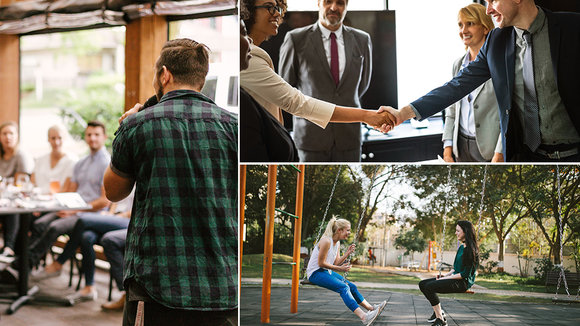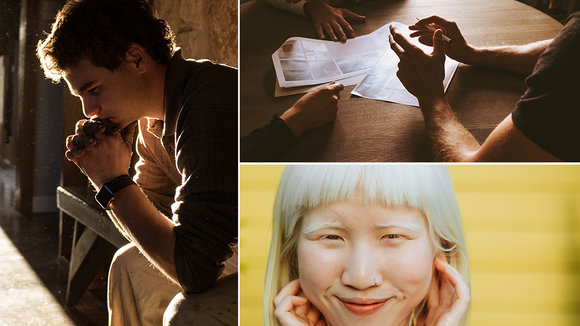1/6
Design Thoughts for 2019
2019 is here! And with this evolution of time, we need to address the evolution of the design process as well. Over the last decade, design has been recognized and shot into the spotlight, with most of the new-age and top firms pushing design-first, this is one of the most exciting times to be in this field. Pushing for creativity to over-all consciousness, here are the top 3 things to be thinking about design as shared by Norman Teh.
Recruiting a talented and innovative designer?
with YD Job Board to connect with some of the best designers on the planet.
Looking for an interesting job opportunity? Check out
to find relevant job openings in the best design companies.
Here are 3 thoughts for 2019, as we anticipate new challenges for practitioners, shifts in the industry and practices that help stimulate more imaginative exchanges in our community.
Design has come a long way in Singapore. The practice of design thinking is abundantly prevalent in many local organizations; design leadership roles have quadrupled in the last decade and the design sector has contributed $2.3 billion to the nation’s GDP. The landscape looks promising.
Our collective has always pride ourselves as being problem solvers. But one of the key areas we need to sharpen our knives at is problem reframing in the boardroom. As more of us get invited into these rooms to audition for how we might be able to imagine new areas of value and build enablers to accelerate that — we need more ambitious approaches that will radically design better business models and customer experiences, and that starts with problem reframing.
Whether it’s demystifying pre-conceptions in a workshop, building opportunity indexes for emerging markets or mapping dynamic ecosystems to learn how we might leverage on future partnerships — designers will need to deepen multiple literacies to help businesses rethink what CX 2.0 will be in 2019 and beyond.
We live in interesting times. Designers now can choose to work in any domain, re-engineer their roles as they see fit and build products and experiences of the future.
It feels like anything is possible, yet the challenges of tomorrow remain complex and unpredictable. In 2019, designers will need to learn how they might help organizations anticipate the challenges of tomorrow if we’re only employing best practices, data sets or mental models of the past? How do we determine when it’s useful to push the boundaries, change them and establish new practices? And why might it be unwise to convert best practices into sacred practices?
Groundbreaking innovation is an amalgamation of new ideas, products, services or experiences that require us to think in new ways and ask customers to do things slightly differently.
Why should innovation be limited to the solution paradigm when innovation can be applied to mental models too? The intrinsic value of building your own models lies in understanding business trends, market shifts, emerging technology, societal shifts, population movements and translating them into actionable and innovative processes to help your organization stay competitive.
Imagine building an internal insights library capability for your organization to understand regional market shifts, capturing changing customer behaviors and attitudes; all while keeping cross-functioning teams contextually aware of the barriers, opportunities, learnings, and outcomes on the ground.
Or rethinking Uber, Grab or Go-Jek’s loyalty programme to shift away from shopping rewards to providing access for further education (e.g. tutoring, night classes, etc), crowdsourcing or donating to local charity organizations or sharing a pilates yoga or urban gardening classes in your neighborhood. Can we build reward systems that are more reflective of society, make us more proactive as citizens and nudge us into areas that improve our overall physical and mental wellbeing?
Our roles are reaching an inflection point where we’re more intertwined with different parts of our organizations than ever before. A few years ago, we might have been primarily focused on advocating design principles and processes, but the road ahead is about building value in a variety of ways, while creating enablers that accelerate learning and innovation within organizations.
It’s a quiet work of art when you’re able to watch a speaker on a panel session articulate their personal journey, mental models, important failures and proudest moments — if it’s facilitated well by the moderator. Like observing two seasoned dancers; one partner is always leading with active listening and calibrated questions; whilst the other intuitively follows by being open, sharing thoughts and challenging conventions.
And yet these sightings are rare and few. Having attended several talks, events, and conferences this year; a recurring theme is hearing new acquaintances, colleagues or friends grow increasingly frustrated with speakers making generalized statements and being ambiguous on stage.
This is not new. But it’s a disturbing trend that we should be concerned about. Especially if it turns intriguing topics and speakers at live events to a stalemate exchange with audiences.
As invited speakers, we need to unlearn this terrible habit of being heavy with verbal garnish. It’s not helpful to anyone around you and it declines personal growth and self-awareness. The biggest detriments of this malpractice is the spread of misinformation and misrepresentation generated from poor quality discussions. Audiences can leave feeling uninspired or worst, bookmark this as a memory of how mature (or lack of) discussions are between practitioners and audiences in Singapore.
Expectations for a speaker is simple. Be concise. Be specific. Be helpful. Be transparent. Mix that with personalized wit in a blender and you’ve got a delightful mental meal that will satisfy audience’s appetites. It’s important to learn how to calibrate conversations so that we learn why it’s important to be specific? Why context matters? And what stories or learnings are most valuable to audiences?
Part of our role is being mindful of when to pull the levers from being an active listener to a thoughtful speaker and that includes fostering an environment that challenges audiences to ask better questions in a positive way.
We need our partners, the moderators to play their part too. Poorly formed questions equate to uninspiring default answers. Stop tiptoeing with lengthy introductory bios, do your thorough homework on speakers, listen to their answers and learn when to deviate and improvise from your cue cards to uncover important stories of reflections, predictions, and values that they might be willing to share if they were asked to elaborate further.
The original write up by Norman Teh
.
YD has published the best of Industrial Design for over 15 years, so the designers you want are already on our network.
is our endeavor to connect recruiters with our super talented audience. To recruit now,
with us!
发布于2019-02-27
设计师
interesting times. Designers now can choose to work in any domain, re-engineer their roles as they see fit and build products and experiences of the future.
颜色
相关推荐






